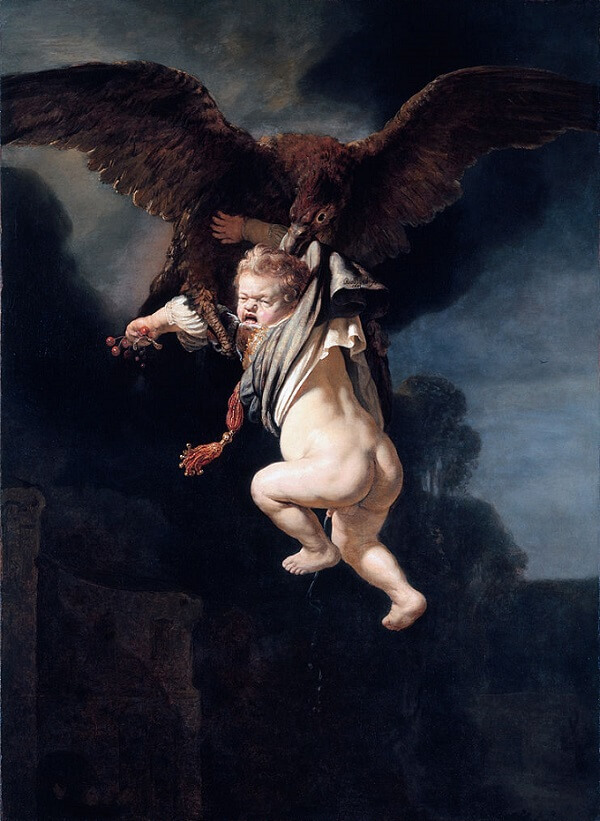Rape of Ganymede by Rembrandt

In Rape of Ganymede, Rembrandt transformed the 'horror' into a sense of humour which verges on the ridiculous. Ganymede was carried off by an eagle, in order to be a serving boy for the gods, on account of his inordinate beauty. Rembrandt has not chosen to interpret the story in a conventional way; Ganymede is in fact a grossly proportioned infant who is held in the grip of the eagle, and most of his clothes have been removed, or are in disarray, because of the struggle. As the eagle lifts the unfortunate child from the ground he urinates in fear.
It seems clear that the picture was intended to raise a smile; the eagle is both monstrous and endearing-he will not hurt Ganymede too much, but just enough to give him a nasty fright. Ganymede's expression is exactly that of a fractious child in a moment of tantrum - a theme which the artist used to effect in several of his drawings. Rembrandt has thus given the story a totally human content; all the ideal elements have been removed to the point where Ganymede's over-ample posterior thrusts itself at the spectator in a manner whose parallel is easily found in Rembrandt's pupils.




















